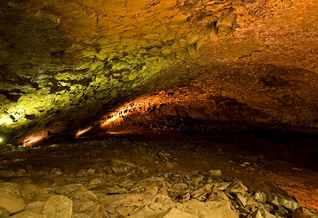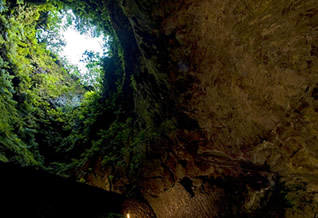Azores Geodiversity
a unique archipelago
The Archipelago of the Azores is located right in the middle of the Atlantic Ocean on the triple junction of the Eurasian, American and African plates, and it is characterised by 16 volcanoes, nine of which are still active.
The Azorean volcanic landscape comprises around 1,750 volcanoes, including slag and spatter cones, lava domes, coulees, tuff rings, Surtseyan cones and eruptive fissures.
The telluric and volcanic nature of the Azores is widely known. Earthquakes are quite frequent in the archipelago. Since the Azores are inhabited, there were 26 volcanic eruptions on the islands and neighbouring seas, some more spectacular than others.
The last eruption took place between 1998 and 2000 just off Terceira Island (on the Serreta volcanic ridge), while the last great eruption was the Capelinhos Volcano on Faial Island between 1957 and 1958.
The Azorean landscape features many unique shapes, rocks and structures. The Azores geodiversity is closely connected to the Earth's dynamics and particularly to the volcanic and geotectonic features of this region of the world. Therefore, the Azores are a natural laboratory for volcanic geodiversity (Lima et al., 2009).
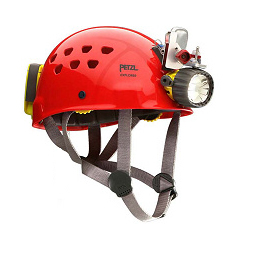
The Archipelago of the Azores is located right in the middle of the Atlantic Ocean on the triple junction of the Eurasian, American and African plates, and it is characterised by 16 volcanoes, nine of which are still active.
The Azorean volcanic landscape comprises around 1,750 volcanoes, including slag and spatter cones, lava domes, coulees, tuff rings, Surtseyan cones and eruptive fissures.
The telluric and volcanic nature of the Azores is widely known. Earthquakes are quite frequent in the archipelago. Since the Azores are inhabited, there were 26 volcanic eruptions on the islands and neighbouring seas, some more spectacular than others.
The last eruption took place between 1998 and 2000 just off Terceira Island (on the Serreta volcanic ridge), while the last great eruption was the Capelinhos Volcano on Faial Island between 1957 and 1958.
The Azorean landscape features many unique shapes, rocks and structures. The Azores geodiversity is closely connected to the Earth's dynamics and particularly to the volcanic and geotectonic features of this region of the world. Therefore, the Azores are a natural laboratory for volcanic geodiversity (Lima et al., 2009).
Given its volcanic nature and, thus, the considerable amount of pillow lava, the Azores speleological heritage is quite rich and diversified. This important heritage justifies the creation of "Geoparque Açores" (Azores Geopark), which is about to be approved. This project is based on a spatial network formed by several areas spread by the nine islands of the archipelago and aims to represent the geodiversity that characterises the Azorean territory and its geological history, to value the elements encompassed by the archipelago's geodiversity and to allow it to be part of an international geoconservation context.
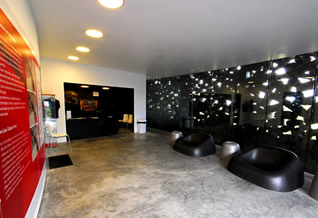
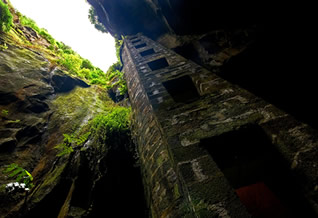
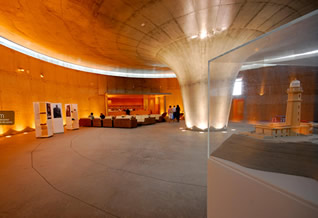
There are 270 natural cavities in the Azores, meaning that there are many kilometres of unusually shaped underground paths where many secrets and strange forms of life are hidden. These cavities could be caves, volcanic grottos, fissures and caves resulting from erosion or even a mix of these different types of cavities.
Most of the known volcanic cavities existing in the Azores are located on Pico Island, which features 111. The largest lava tubes of the Azores are the Gruta das Torres (5,150 m long) on Pico Island and the Gruta dos Balcões (4,421 m long) on Terceira Island. The Algar do Morro Pelado and the Bocas do Fogo on São Jorge Island, 140 m and 120 m long respectively, are the largest volcanic grottos of the archipelago.
The Azores offer a network of infra-structures, routes, programmes and equipment that will allow you to enjoy and understand the most significant aspects of this valuable natural heritage, particularly the one on Pico Island.
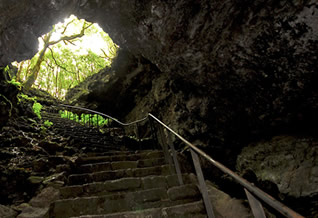
© siaram.azores.gov.pt
© siaram.azores.gov.pt
© siaram.azores.gov.pt
© siaram.azores.gov.pt
© siaram.azores.gov.pt
© siaram.azores.gov.pt
